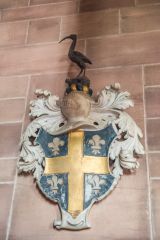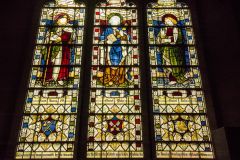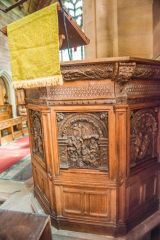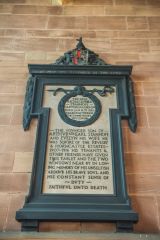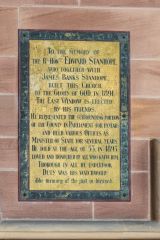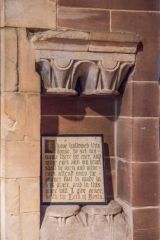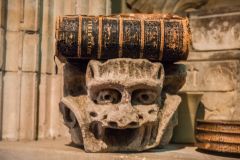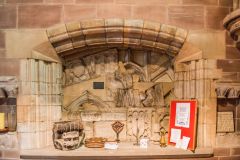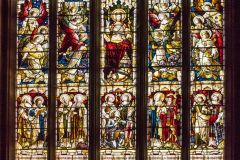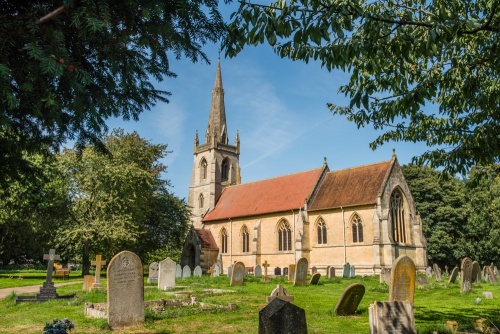
The parish church of St Lawrence in the pretty Lincolnshire village of Revesby is at least the third church on this site. It was built in 1891 by architect Charles Hodgson Fowler of Durham in Decorated Gothic style, under the patronage of Edward Stanhope and James Banks Stanhope.
The 1891 church replaced an earlier Georgian building erected in 1733 by Joseph Banks, the owner of Revesby Abbey. Banks was the great-grandfather of the naturalist Sir Joseph Banks. The 1733 church, in turn, replaced a Norman building of which nothing now remains. Georgian panelling from the 1733 church was rescued and used in the present church.
That Norman church was linked to the Cistercian abbey of Revesby, founded in 1142 as a daughter house of Rievaulx Abbey in Yorkshire. Revesby itself had a daughter monastery at Cleeve in Somerset, founded in 1198 by 12 monks of Revesby under Abbot Ralph.
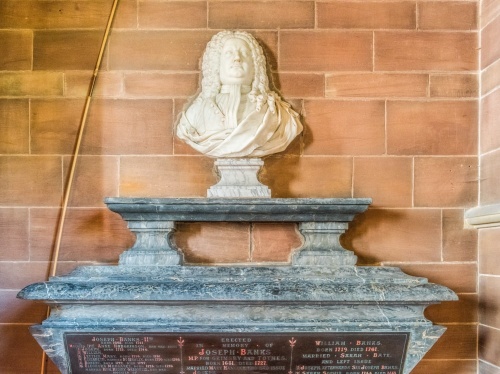
The Sir Joseph Banks Connection
The Banks family were owners of Revesby Hall for generations. Sir Joseph Banks' great-grandfather bought the Revesby estate in 1714. He is commemorated by a marble obelisk in St Lawrence's churchyard. Joseph's son, also named Joseph, built the almshouses beside the church in 1729. They were rebuilt by the Stanhope family in the Victorian period. Look for the memorial to Benjamin Stevenson in the churchyard; he served the Banks family as the steward of the Revesby estate from 1741-1792.
The family memorial is at the west end of the north aisle. The memorial is in the form of a marble sarcophagus topped by a Carrera bust of a bewigged Joseph Banks (1681-1727) and commemorates three generations of the Banks family, including Joseph, Joseph II (1695-1741), and William (1719-1761). William Banks and his wife Sarah (nee Bate) had two children, the eldest becoming Sir Joseph Banks.
Sir Joseph Banks (1743-1820) was a botanist, naturalist and patron of the sciences. He is perhaps best-known today for his role in Captain James Cook's first voyage to the Antipodes in 1778-81. Banks served as the President of the Royal Society for 41 years. He helped establish the Royal Botanic Gardens at Kew as the leading botanical garden in the world and sent plant hunters around the globe in search of rare and unusual species.
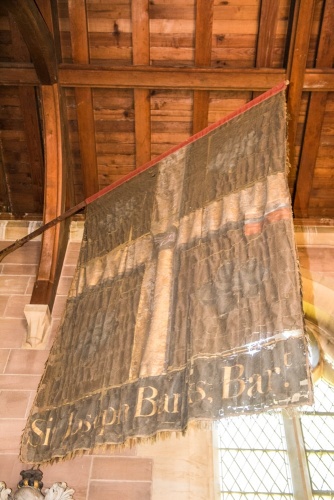
He is credited with discovering over 1400 plant specimens and bringing them back to Britain for study and propagation. He also advised the British government to colonise New South Wales in Australia and to establish the convict colony at Botany Bay. Banks died in London and is buried at St Leonard's Church in Heston, Hounslow.
Above the Banks family monument hangs a banner commissioned by Sir Joseph Banks when he was invested as a Knight of the Order of the Bath in 1795. He was later named a Knight Grand Cross. Also in the north aisle is a painted and gilded Banks family coat of arms.
Much less grand than the Banks family memorial but much more moving is a tablet on the wall commemorating the death of the Hon. Richard Stanhope, a captain in the Grenadier Guards who died in action at the Somme on 15 September 1916. Captain Stanhope was the younger son of the 6th Earl Stanhope and was the squire of the Revesby and Horncastle estates. Interestingly, the memorial was not given by Stanhope's family but by his tenants and friends, who also gave the two nearby windows in his memory.
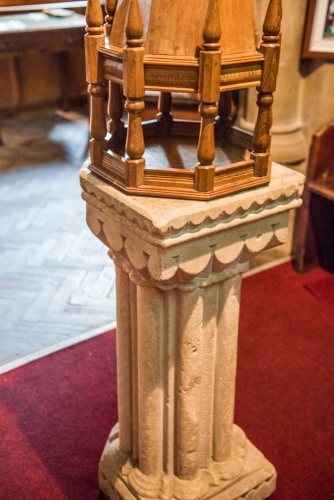
Also on the wall is a brass tablet honouring the Rt Hon. Edward Stanhope (d. 1893), who helped pay for the present church. The large east window is also in his honour.
Only a few pieces of medieval stonework have survived from the Norman church at Revesby. One piece is a grotesque gargoyle which now sits within a niche. Fragments of medieval carved stones are set into the wall at the back of the niche. Beside the niche are a pair of medieval capitals and column bases.
The rather odd little font appears to be made from a section of a medieval moulded shaft with a cushion capital top. The official Historic England listing text calls it 'disappointing', which seems harsh. I prefer 'unusual'.
The pulpit is Victorian but has 4 reset 16th-century Flemish panels.
St Lawrence is an interesting church, worth visiting primarily for its connection with the Banks family. The location is very picturesque, bordering on the village green and beside the Banks Almshouses. The church was locked when we visited but there was a keyholder in the neighbouring almshouse, which made it very easy to retrieve and return a church key.
About Revesby, St Lawrence Church
Address: Blackey Lane,
Revesby,
Lincolnshire,
England, PE22 7NA
Attraction Type: Historic Church
Location: Just off the A155 on the edge of the large village green.
Website: Revesby, St Lawrence Church
Location
map
OS: TF298614
Photo Credit: David Ross and Britain Express
POPULAR POSTS
HERITAGE
 We've 'tagged' this attraction information to help you find related historic attractions and learn more about major time periods mentioned.
We've 'tagged' this attraction information to help you find related historic attractions and learn more about major time periods mentioned.
Find other attractions tagged with:
NEARBY HISTORIC ATTRACTIONS
Heritage Rated from 1- 5 (low to exceptional) on historic interest
Lincolnshire Aviation Heritage Centre - 2.5 miles (Museum) ![]()
Scrivelsby, St Benedict's Church - 3.4 miles (Historic Church) ![]()
Haltham-on-Bain, St Benedict's Church - 3.6 miles (Historic Church) ![]()
Bolingbroke Castle - 3.8 miles (Castle) ![]()
Horncastle, St Mary's Church - 5.6 miles (Historic Church) ![]()
Tattershall College - 5.7 miles (Historic Building) ![]()
Tattershall Church - 5.9 miles (Historic Church) ![]()
Tattershall Castle - 6 miles (Historic House) ![]()
Nearest Holiday Cottages to Revesby, St Lawrence Church:
More self catering near Revesby, St Lawrence Church
